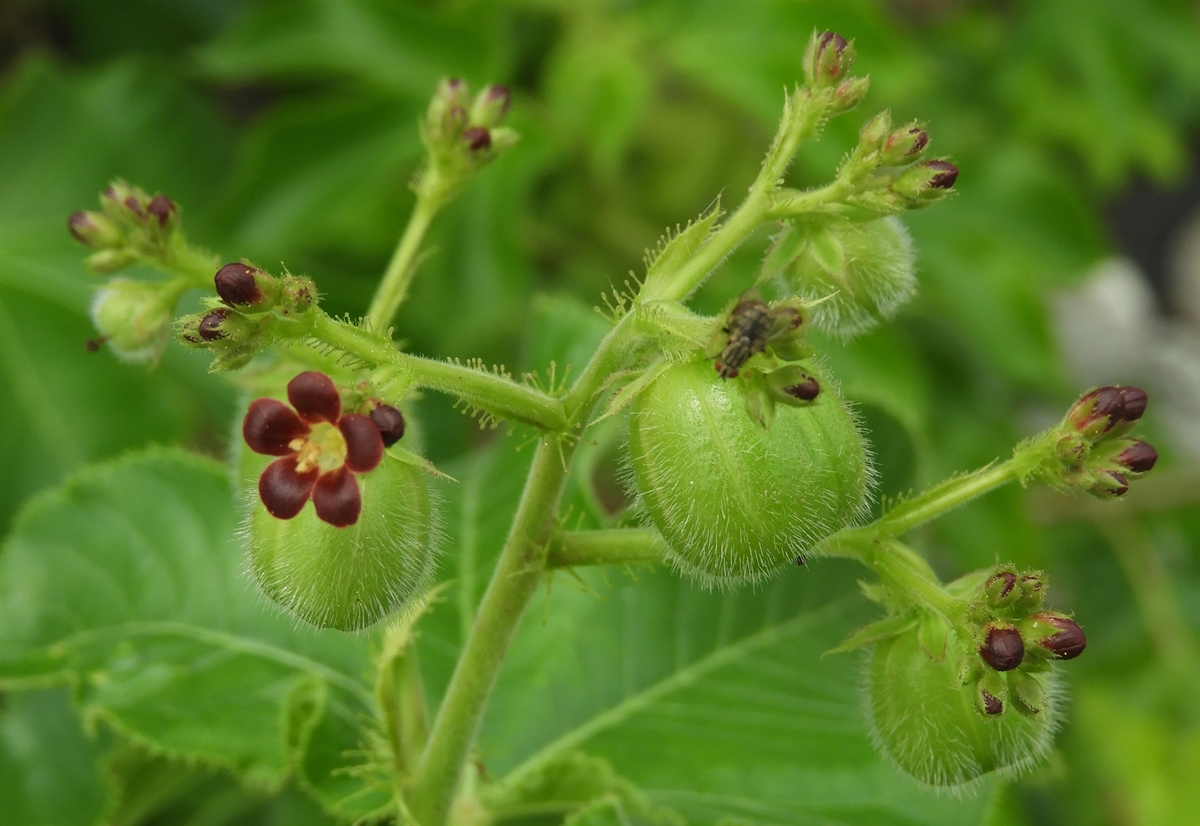Habit: Jatropha gossypiifolia grows as a pubescent/glandular herb/shrub up to 1 m in height. The leaves are arranged alternately and 3 – 5 lobed and to 18 cm in length/width. The lobes to 15 cm in length, ovate, with a dentate/entire, glandular leaf margin, and an acuminate leaf apex. There are glandular, fimbriate stipules.
Jatropha gossypiifolia is monoecious. The incomplete, imperfect, actinomorphic, flowers are arranged in terminal, glandular cymes. Staminate flowers have 5 unfused, green, ciliate, sepals in the calyx and 5 red petals. There are 8 – 12, fused stamens, 5 disk glands, and no carpel. The carpellate flowers have 5 unfused, glandular, sepals in the calyx. The corolla has 5 red petals, 5 disk glands, and there are no stamens. The superior ovary has 3 locules. The fruit is a 3 – lobed, pubescent capsule.
Habitat: Jatropha gossypiifolia grows in Human Altered environments (yards, gardens, abandoned fields, nurseries).
Distribution: Jatropha gossypiifolia is a doubtful native to the Lucayan Archipelago but is grows on many of the north and central island groupings. It is native to the Great Antilles, Mexico and Central and South America. It is grown around the world in tropical and subtropical areas.
Medicinal/Cultural/Economic usage: Jatropha gossypiifolia is not known to be used medicinally in the Lucayan Archipelago.
Jatropha gossypiifolia has been used medicinally in other areas of the world. There are a high number of active compounds in this species and many are highly TOXIC. In general no parts should be directly ingested and usage without training is highly discouraged.

